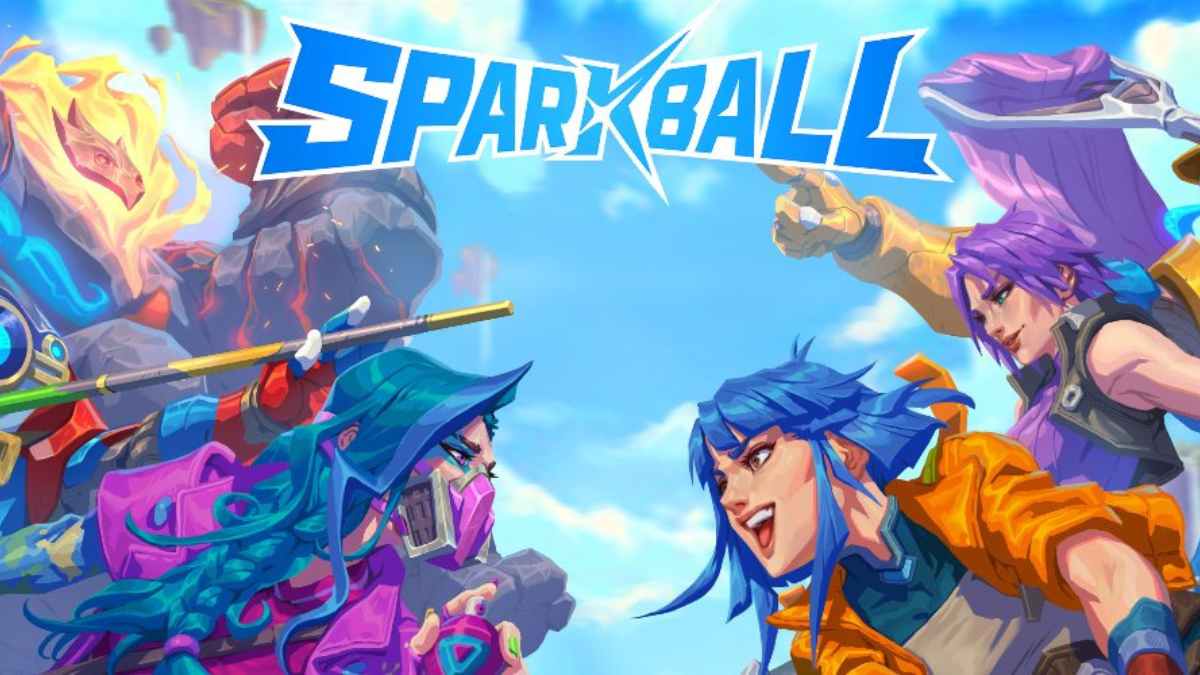Sparkball isn’t easy to pin down. It’s not just a MOBA, not quite a brawler, and definitely not a traditional sports title. But it borrows bits from all three, creating a fast-paced hybrid where positioning and reaction time matter as much as team coordination.
Now, as it ramps up its preseason, Sparkball is doing something a little different — tying access and progression to an internal scoring system that rewards participation, not just wins. It’s part early-access rollout, part experiment in community design.
Gameplay Focused on Movement and Momentum
The core loop of Sparkball is simple on paper: two teams fight for control over an orb and score by pushing it into the opposing goal. But the execution leans more into combat than sport. Every character has its own move set, cooldowns, and utility options, turning each match into a rhythm of skirmishes and resets. It’s not built around high-stakes elimination or rigid lanes. Instead, it’s about creating space, pressuring the opponent, and making smart passes when the moment hits. The way matches ebb and flow feels closer to a fighting game than a traditional MOBA.
Mechanically, it rewards players who can read the field and adapt. The best plays usually come from a well-timed stun or a last-second save, not a grindy stat build. That focus on moment-to-moment action is what keeps it interesting across repeated sessions.
The Preseason Structure and Invite System
Rather than an open beta or demo, Sparkball’s preseason uses an invite-only format tied to a system called the Sparkpass. Players accumulate points by participating in matches, referring others, and staying active across social and in-game events. Those points determine access tiers and eligibility for future rewards.
This structure essentially turns preseason into a live filter for community engagement. Instead of rewarding just raw performance, it prioritizes consistency and presence. It also creates a self-sorting ecosystem where the most active players naturally float to the top tiers.
There’s a leaderboard element, but the system doesn’t feel like it’s built solely for whales or min-maxers. It seems designed to measure how much time and energy a player is actually putting into the ecosystem.
Rewards Tied to Ecosystem Participation
Most of the current rewards are cosmetic or profile-based — things like avatars, emblems, and early naming rights. But the real play here is access. Players who consistently earn Sparkpoints during the preseason phase will lock in future perks and visibility in the broader community.
This approach mirrors systems used in other Web3 projects, though Sparkball avoids direct token speculation. There’s no mention of crypto payouts or NFT trading as part of this phase. Instead, the focus is on establishing a long-term player base that’s invested before launch.
That said, the infrastructure is clearly built to expand. Whether blockchain integrations become relevant later will depend on how the team handles scaling and monetization. For now, the mechanics stay grounded in traditional systems, with emphasis on social competition.
A Community-Centric Test Case
What stands out most isn’t the gameplay — although that’s solid — but the way the preseason acts as a kind of social experiment. Sparkball’s team is clearly interested in building a player-first ecosystem, not just a game with seasonal churn.
By tying rewards to participation and creating a transparent progression system, they’re setting up a model where long-term involvement matters. It’s not unique in theory, but few games have committed to this structure before full release. Whether this approach sustains interest post-launch is the bigger question. But in a space crowded with token-heavy Web3 pitches, Sparkball’s current direction feels refreshingly focused on the experience itself.
Web3 Analyst & Play Blockchain Games Guide
CryptoKit breaks down Web3 gaming like it’s second nature. From tokenomics to airdrop strategies, she turns blockchain chaos into clear, actionable advice for players who want to win more than XP.




